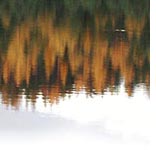
Homepage
Contents
Search
About Forestry
Background
Contact Information
Links
Background of the database and Website
 SNS
- the Nordic Forest Research Co-operation Committee
had for some years noticed that long-term field experiments in forest faced many of the same challenges in all Nordic countries. This was mainly a problem in raising sufficient financial support for maintaining high quality experiments and thereby to assure collection of data and achieve valuable scientific results also in the future. It was supposed that possible benefits for the maintenance of existing and the establishment of new high quality experiments, could be achieved by a closer Nordic co-operation within this field. One important prerequisite and the first step for increased scientific co-operation is to have a common database showing all experiments in the Nordic countries with a common classification standard. NOLTFOX is the result of the attempt to make such a database, easily accessible for everybody.
SNS
- the Nordic Forest Research Co-operation Committee
had for some years noticed that long-term field experiments in forest faced many of the same challenges in all Nordic countries. This was mainly a problem in raising sufficient financial support for maintaining high quality experiments and thereby to assure collection of data and achieve valuable scientific results also in the future. It was supposed that possible benefits for the maintenance of existing and the establishment of new high quality experiments, could be achieved by a closer Nordic co-operation within this field. One important prerequisite and the first step for increased scientific co-operation is to have a common database showing all experiments in the Nordic countries with a common classification standard. NOLTFOX is the result of the attempt to make such a database, easily accessible for everybody.
In 2001, the first version of NOLTFOX was launched to the public. Two years later, in 2003, NOLTFOX was evaluated by an international group and they recommended SNS to continue the development of NOLTFOX. In accordance with the evaluation outcome the work on including the Baltic countries (Estonia, Latvia and Lithuania) in NOLTFOX was initiated in 2004. A further development of NOLTFOX was also proposed with expansion of the database with references to published literature relevant to the longterm field experiments. The new version of NOLTFOX including literature and the Baltic countries was launched in 2005. United Kingdom joined the co-operation in 2006 and will present their data on the web-site in 2007.
The aim with the database is to stimulate to an increased Nordic, Baltic and international co-operation within forest research, to increase the scientific quality of field research and to avoid expensive duplication of new experiments in the countries. Increased use of existing data and results are also expected to be a result of NOLTFOX.The project group consisted of researchers from all Nordic countries. The database is constructed by Jukka Pöntinen (Metla, Finland) and the visual layout is designed by Jouni Hyvärinen (Metla, Finland).


